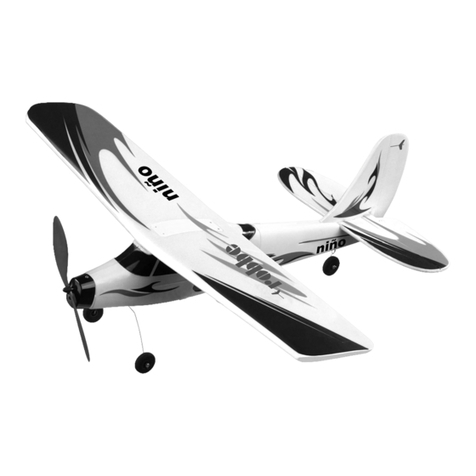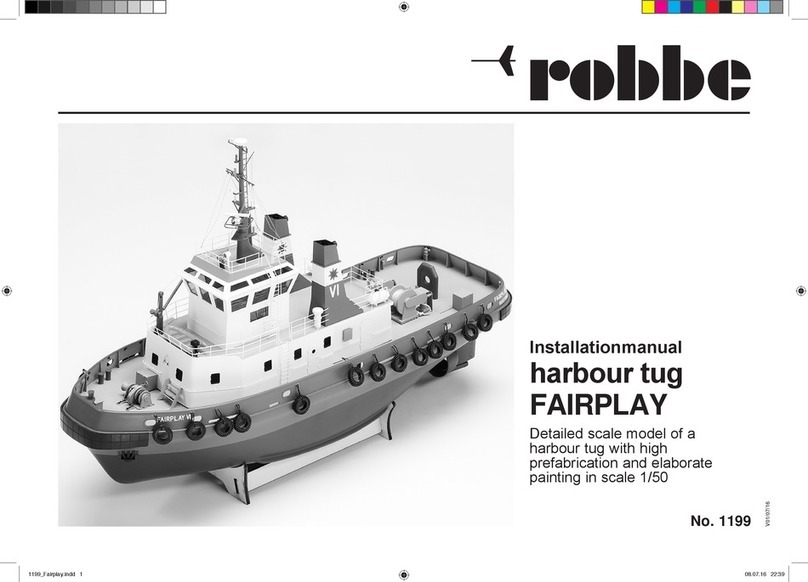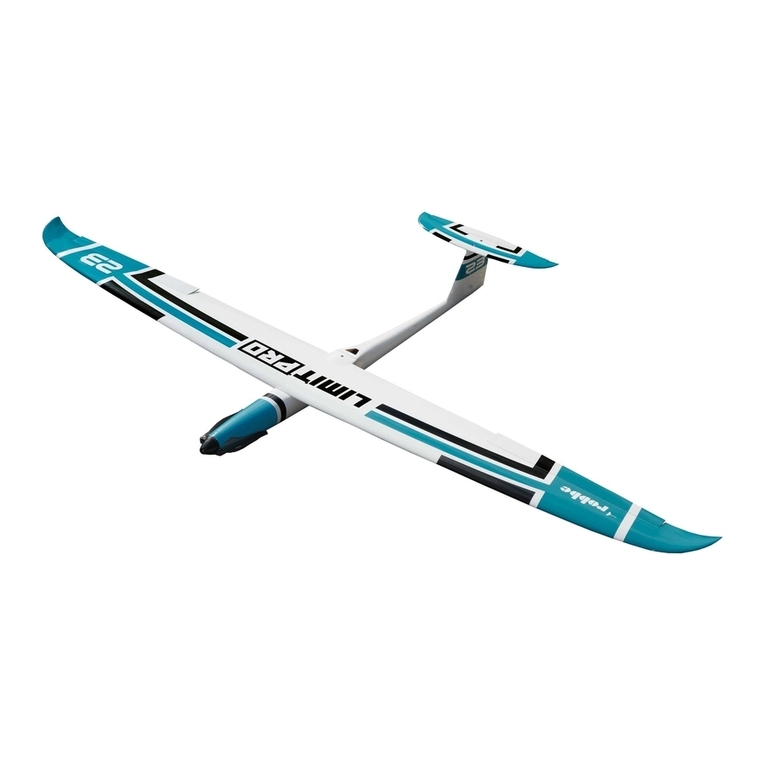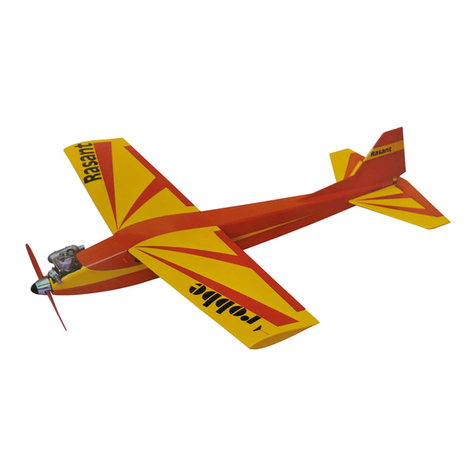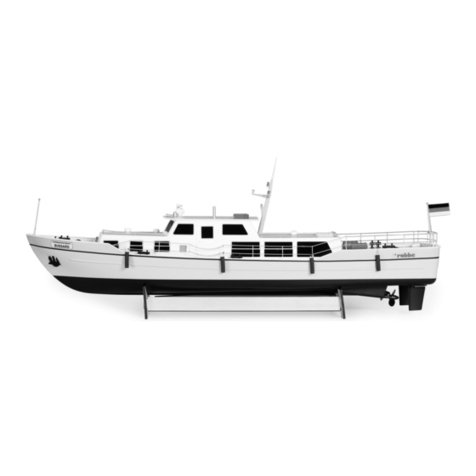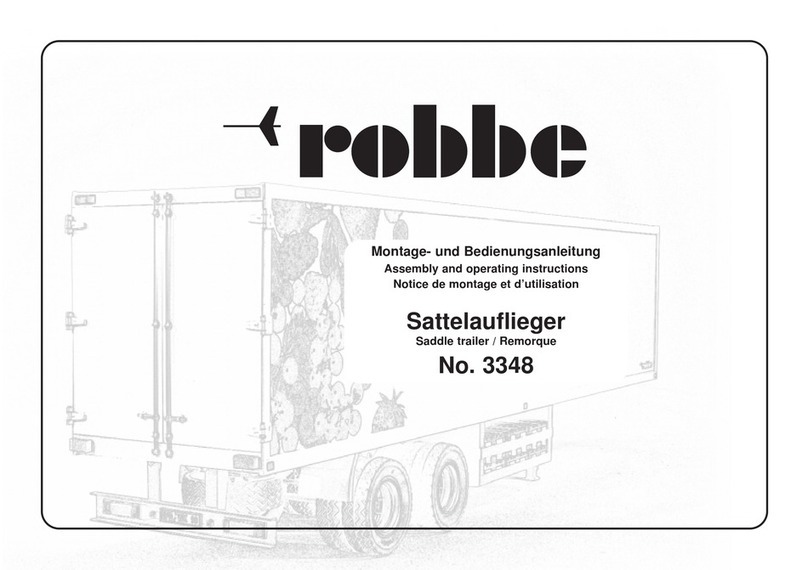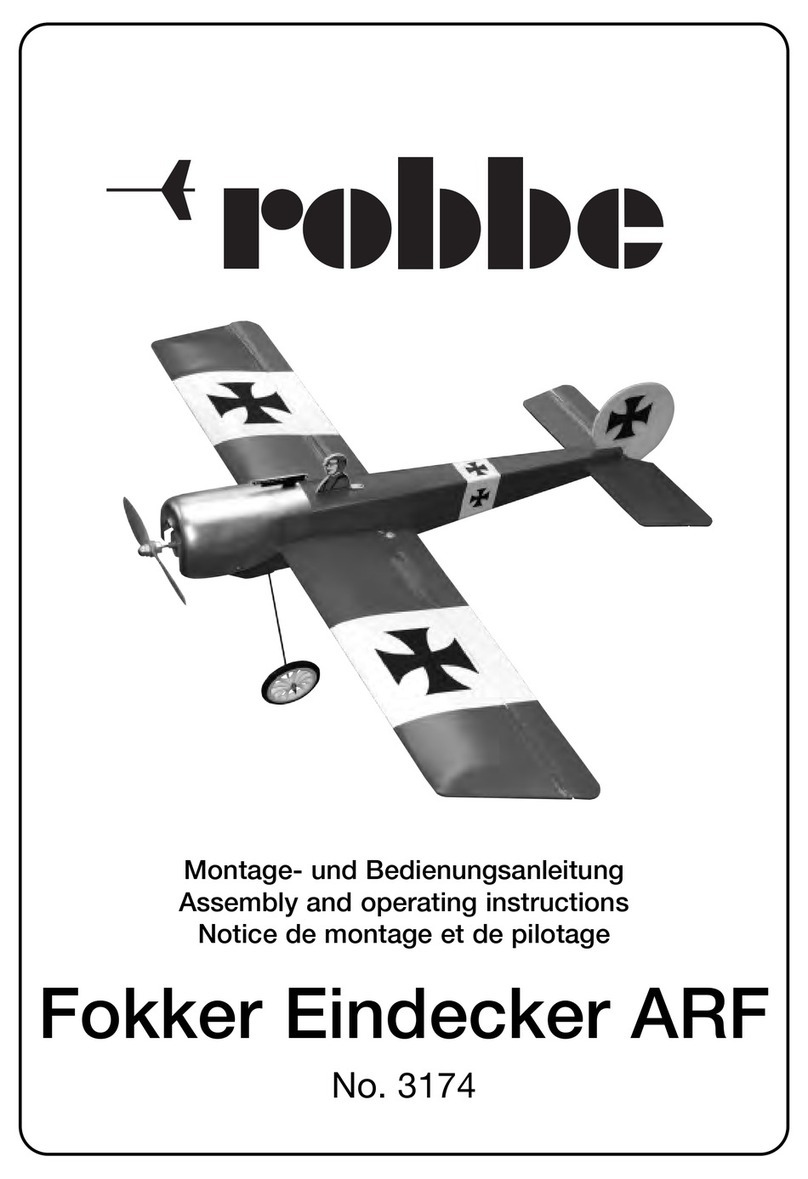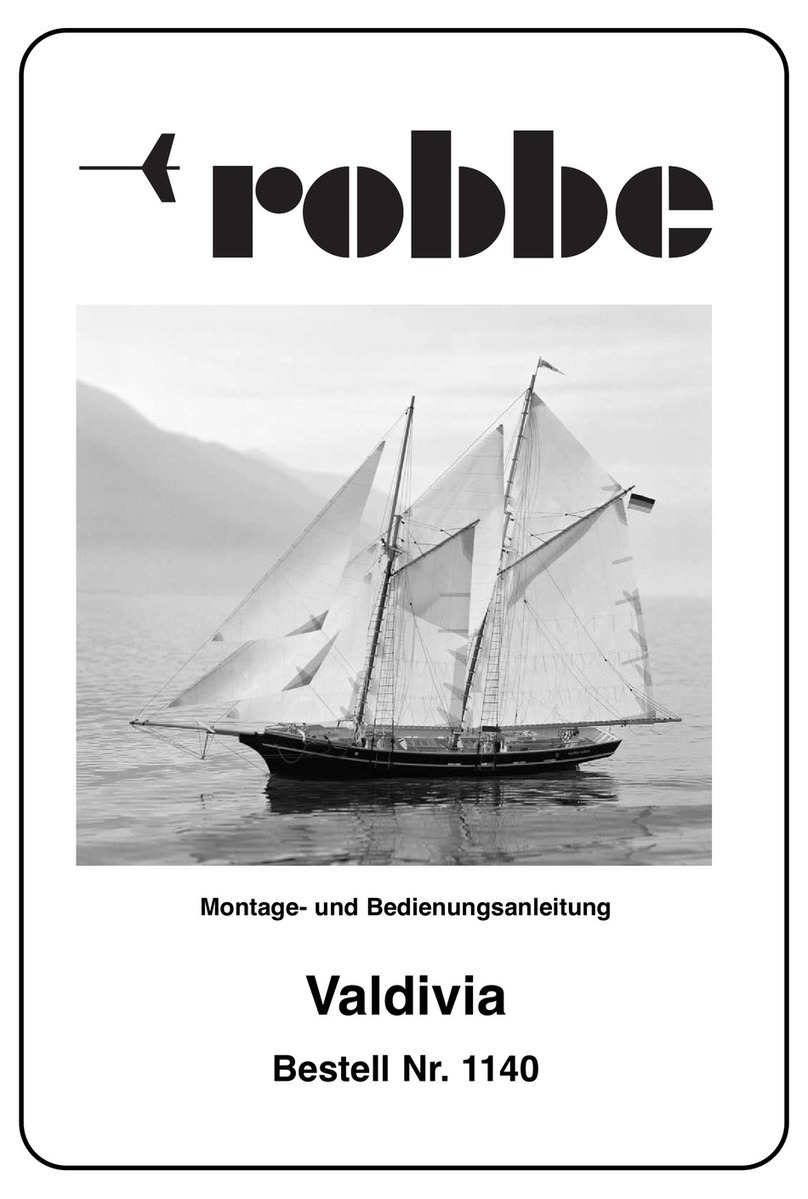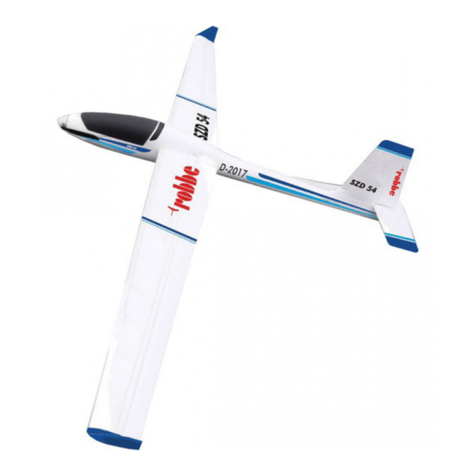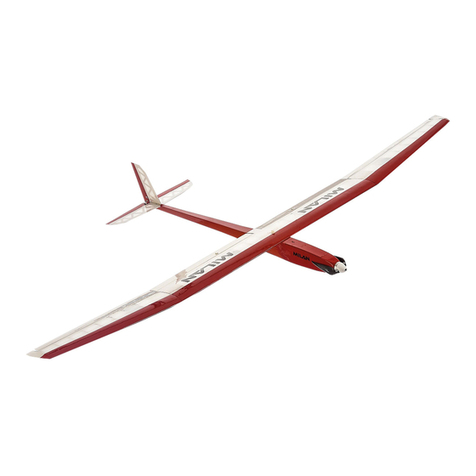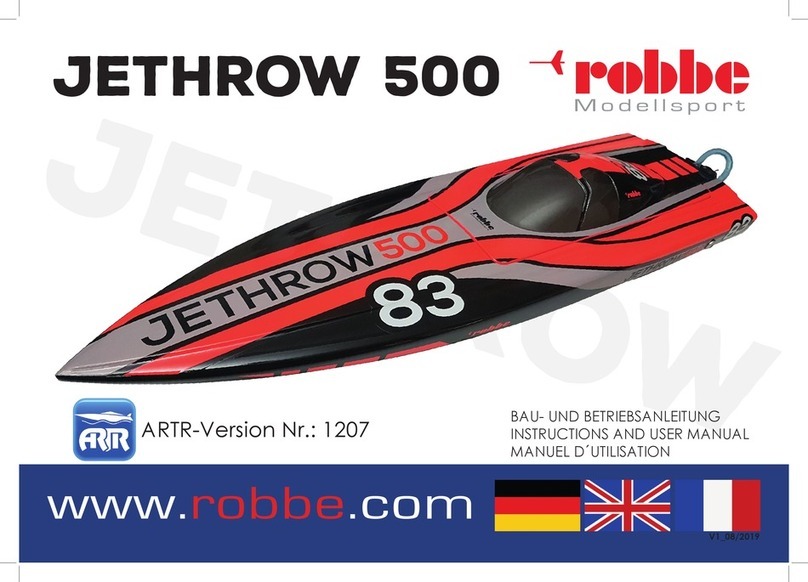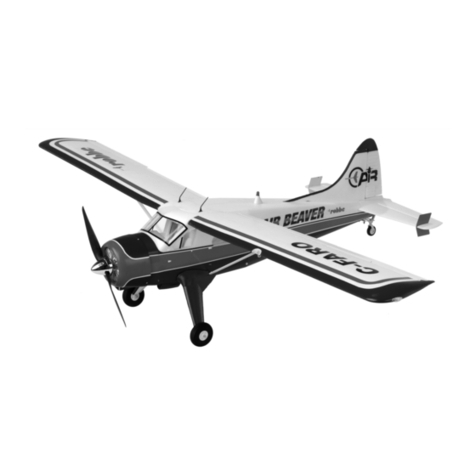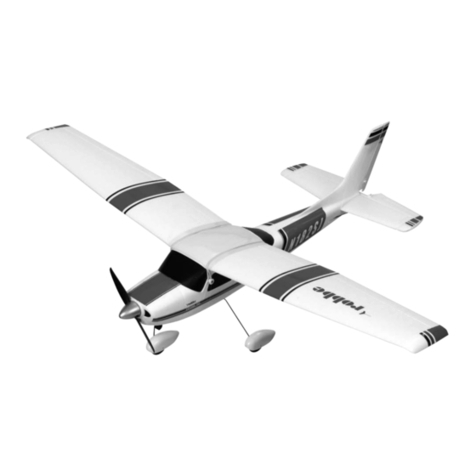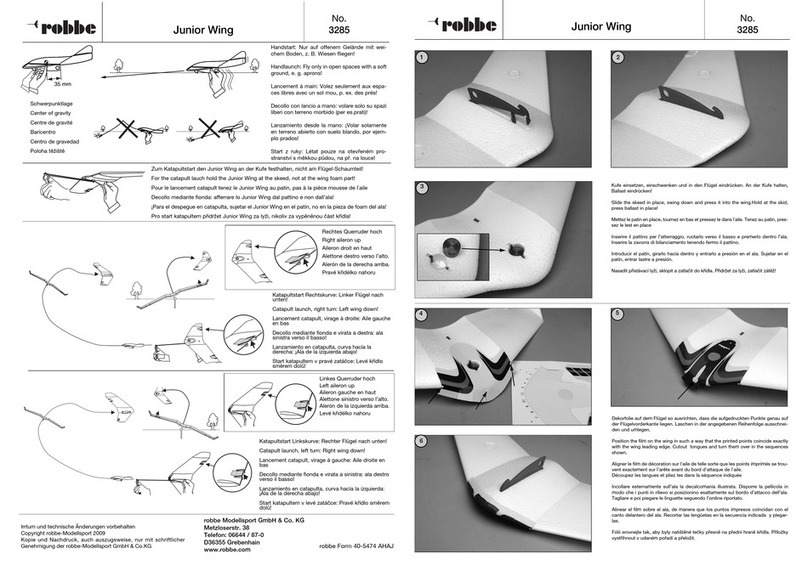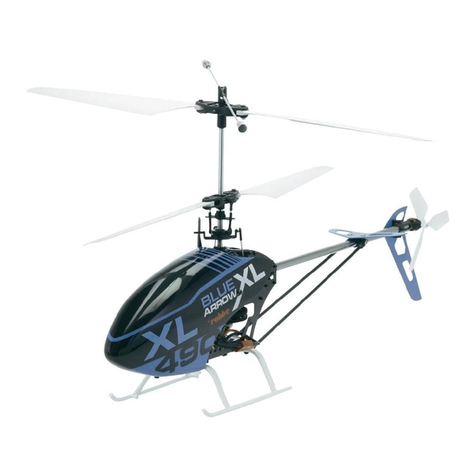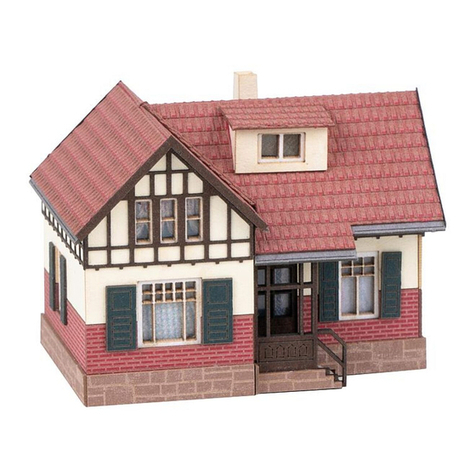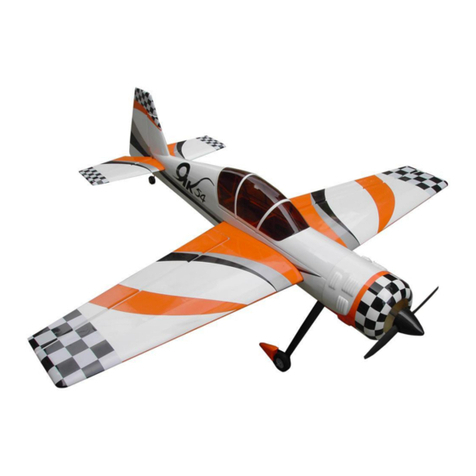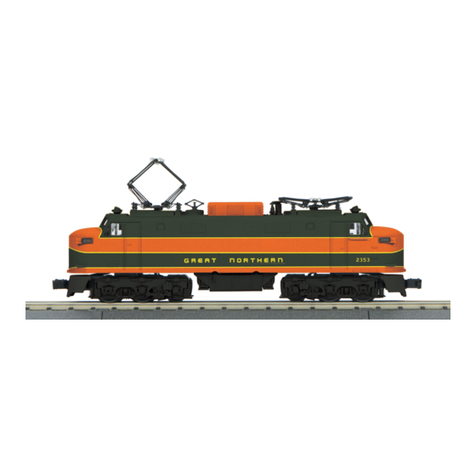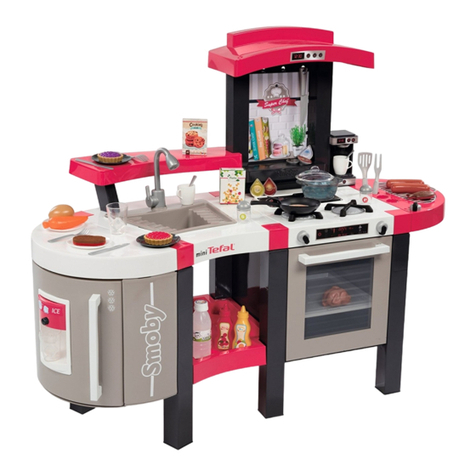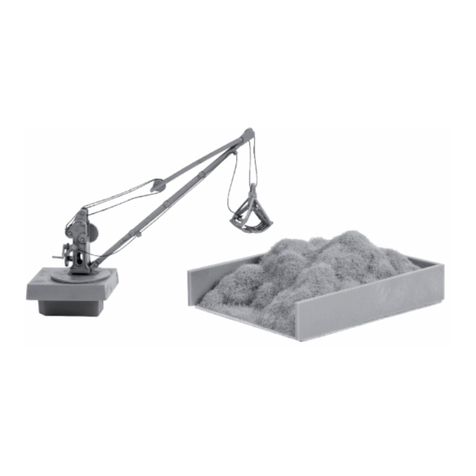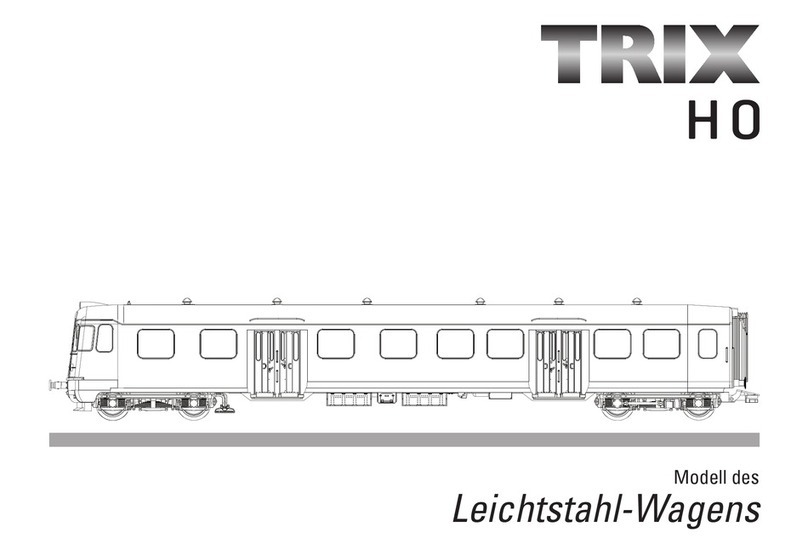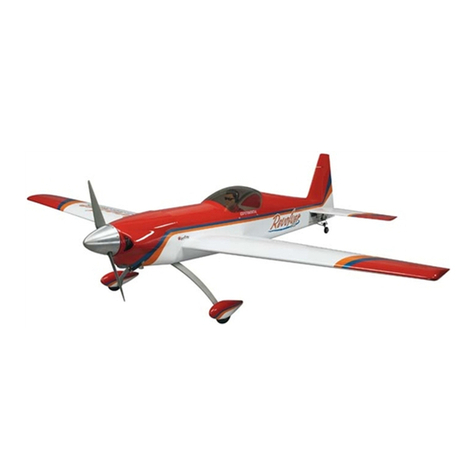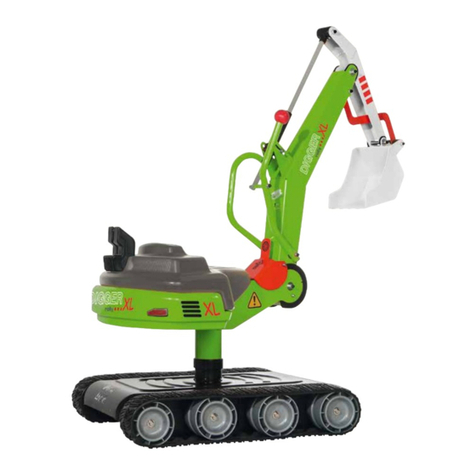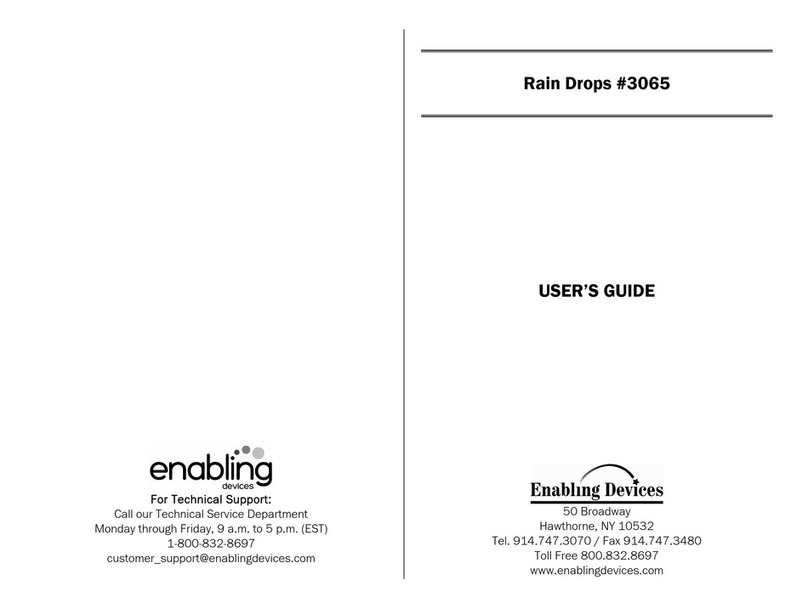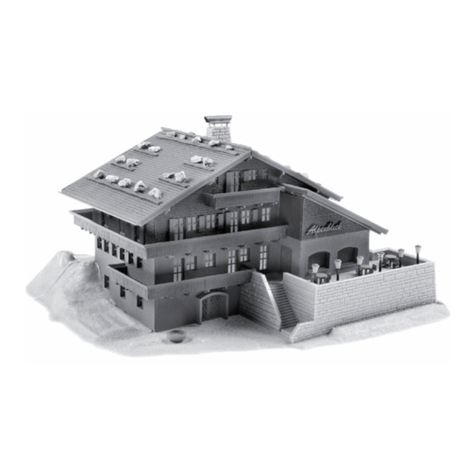
2
INSTRUCTIONS AND USER MANUAL
Modellsport
GENERAL INFORMATION
• The model is designed for the components specied by us. Unless
otherwise stated, servos and other electronic components are
designed for standard supply voltage. Recommended cell count for
Lipo batteries also refers to standard Lipos voltage of 3.7V per cell.
If you use other servos, a different motor and controller, batteries, or
propellers, please make sure they t rst. In the event of deviations,
corrections and adjustments must be made by yourself.
• Before starting construction, always put the servos into neutral. To
do this, switch on the remote control and move the joysticks and
trim buttons (save the one for the throttle) to the middle position.
Connect the servos to the corresponding outputs of the receiver
and supply them with a suitable power source. Please observe the
connection diagram and the operating instructions of the remote
control system manufacturer.
• Do not leave your model in the blazing sun or in your vehicle for long
periods of time. Too high temperatures can lead to deformation/dis-
tortion of plastic parts or blistering of covering foils.
• Before the rst ight, check the wing symmetry, tail unit and fuselage.
All parts of the model should have the same spacing from the left
and right wing or tail plane to the centre of the fuselage or the same
angle.
• If necessary, rebalance the propellers if vibrations are noticeable
when the motor is running up.
• Bubble formation in the covering foils normal to a certain extent due
to temperature and humidity differences and can be easily elimina-
ted with a foil iron or hairdryer.
• For models in shell construction („full GFRP/CFRP“), burrs may occur
at the seams due to the production process. Carefully remove them
with ne sandpaper or a le.
GENERAL SAFETY INFORMATION
• Be sure to read the safety instructions carefully before operating your
model.
• Always follow the procedures and settings recommended in the
instructions.
• If you are using remote-controlled model aircraft, helicopters, cars or
ships for the rst time, we recommend that you ask an experienced
model pilot for help.
• Remote-controlled models are not toys in the usual sense and may
only be used and operated by young people under 14 years of age
under the supervision of adults.
• Their construction and operation requires technical understanding,
careful craftsmanship and safety-conscious behaviour.
• Mistakes or negligence during construction, ying or driving can result
in considerable damage to property or personal injury.
• Since the manufacturer and seller have no inuence on the proper
construction/assembly and operation of the models, these risks are
expressly pointed out and any liability is excluded.
• Propellers on aircraft and all moving parts in general pose a constant
risk of injury. Avoid touching such parts at all costs.
• Note that motors and controllers can reach high temperatures duri-
ng operation. Avoid touching such parts at all costs.
• Never stay in the danger area of rotating parts with electric motors
with connected drive battery.
• Overcharging or incorrect charging can cause the batteries to ex-
plode. Make sure the polarity is correct.
• Protect your equipment and Models from dust, dirt and moisture. Do
not expose the equipment to excessive heat, cold or vibration.
• Use only recommended chargers and charge your batteries only
up to the specied charging time. Always check your equipment for
damage and replace defects with original spare parts.
• Do not use equipment that has been damaged or got wet due to
a fall, even if it is dry again! Either have it checked by your specialist
dealer or in the Robbe Service or have it replaced. Hidden faults can
occur due to wetness or a crash, which lead to a functional failure
after a short operating time.
• Only the components and accessories recommended by us may be
used.
• Do not make any changes to the remote control which are not de-
scribed in these instructions.
SAFETY NOTE FOR MODEL OPERATION
Attention, danger of injury!
• Always keep a safe distance from your model aircraft.
• Never y over spectators, other pilots or yourself.
• Always perform ight gures in a direction away from the pilot or
spectators.
• Never endanger people or animals.
• Never y near power lines or residential areas.
• Do not operate your model near locks or public shipping.
• Do not operate your model on public roads, motorways, paths and
squares, etc., but only in approved locations.
• Do not operate the model in thunderstorms.
• Before each ight, check your remote control system for sufcient
function and range.
• After ying, remove all batteries from the model.
Do not „aim“ the transmitter antenna at the model during operation. In
this direction, the transmitter has the lowest radiation. The best position
of the antenna is to the side of the model.
Use of devices with image and/or sound recording function:
If you equip your model with a video or image recording device (e.g.
FPV cameras, action scams etc.) or the model is already equipped
with such a device at the factory, please note that you could violate
the privacy of one or more persons by using the recording function. An
overight or driving on private ground without the appropriate permissi-
on of the owner or approaching private ground can also be regarded
as an invasion of privacy. You, as the operator of the model, are solely
and fully responsible for your actions.
In particular, all applicable legal requirements must be observed,
which can be found in the roof associations or the relevant authorities.
Failure to comply can result in substantial penalties.
PREFACE
Dear model builder,
You have chosen the VAYU kit from our company. For this we would
like to thank you very much.
The VAYU is a ying wing with a wide range of use. The VAYU is deliver-
ed as a kit. The laser-cut wooden parts will be assembled and glued
with only a few steps in the plug-in box principle. Please read these
instructions carefully, even if you have already built many RC models.
We have given a lot of thought to detail solutions in order to keep the
construction effort as simple and low as possible without neglecting the
functionality.
The kit is manufactured with modern CNC technology. This gives you
the certainty that you will not experience any unpleasant surprises due
to mismatched components when building the VAYU.
Now we wish you a lot of fun building your new VAYU and especially
ying it afterwards.
PLEASE READ THIS MANUAL CAREFULLY BEFORE YOU START ASSEMBLING
THE MODEL.
FLIGHT INSTRUCTIONS
• Before the rst ight, observe the instructions in the „Safety Instruc-
tions“ section.
• When ying the model, you should choose a day with as little wind as
possible
• A large, at area without obstacles (trees, fences power lines etc.) is
suitable for the rst ights.
• Please carry out a functional test of the drive train / power set and
remote control.
• After assembling the model on the aireld, check once again that
all model components such as wing, tail units, wing mounts, engine,
linkages, etc. are rmly and properly fastened.
• For a hand start a helper should be present, who can throw the mo-
del with enough thrust into the air.
• The start usually takes place against the wind.
• Do not stall the model near the ground
• Do not initiate tight turns in the immediate vicinity of the ground.
• Check the reactions of the model to the rudder deections. If ne-
cessary, adjust after landing to increase or decrease the deections
accordingly.
• The minimum ight speed must be at an adequate safety altitude.
• Initiate the landing with sufcient speed




















